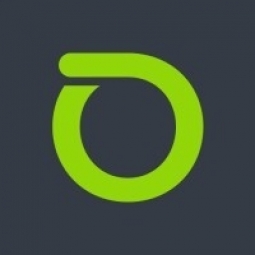下载PDF
Healthcare Improves Performance of Their Telemedicine Service With NETSCOUT
技术
- 平台即服务 (PaaS) - 连接平台
适用行业
- 医疗保健和医院
适用功能
- 物流运输
- 维护
用例
- 远程病人监护
服务
- 云规划/设计/实施服务
- 系统集成
挑战
该医疗保健组织是 NETSCOUT nGeniusONE 服务保障解决方案的长期用户,该解决方案可帮助维护其临床应用程序和服务(包括 Cerner 电子病历和远程医疗平台)的质量、可用性和可靠性。COVID-19 疫情的爆发给他们带来了一些额外的网络和应用程序保障挑战。需要治疗的非 COVID-19 相关医疗疾病的患者越来越多地使用基于云的远程医疗服务。事实上,这款远程医疗应用程序的日常使用量最初增长了十倍以上,并且在为患者提供虚拟预约和随访方面继续扩大。员工对使用该应用程序的好处同样充满热情,并期望其在医疗保健服务方面具有长期效益。从 IT 角度来看,这导致整个企业环境及其互联网服务 (ISP) 链路上的流量增加,需要进行管理以确保每次远程医疗会话的质量。此外,在一项患者调查中,远程医疗服务的评分和评价较低,原因是通话质量差、背景噪音、抖动和掉线,导致患者和医生的通话毫无成效、效率低下且令人沮丧。
关于客户
这个位于美国西部的非营利性医疗保健系统既支持健康计划项目,又支持由 20 多家医院和 150 家诊所组成的社区。每年,需要 40,000 多名技术娴熟、尽职尽责的护理人员付出巨大努力,才能为数十万名患者提供服务。网络服务和临床应用是医疗保健 IT 人员的首要任务。他们严重依赖多种应用和服务,包括电子病历、远程医疗和 IP 语音 (VoIP),以提供优质的患者护理、与患者的灵活沟通以及与同事、员工和家属就诊断和治疗方案进行及时咨询。这些服务以及整个医疗保健系统中使用的许多其他服务必须避免出现速度减慢或中断的情况,如果出现这种情况,需要快速进行分类和修复。
解决方案
作为 NETSCOUT 的现有客户,这家医疗保健提供商能够扩大其现有投资的价值,以支持远程医疗项目,其 IT 团队将 InfiniStreamNG (ISNG) 9000 和 2600 系列认证软件设备添加到其 nGeniusONE 实施中,分别部署在其数据中心和医院。作为外包的坚定支持者,IT 团队还选择了 NETSCOUT 的托管服务计划 nGenius Visibility as a Service (nGenius VaaS) 来实施、配置和管理新设备。最初,nGenius VaaS 专家配置了托管在 Amazon Web Services (AWS) 云中的远程医疗服务监控。在很短的时间内,远程医疗公司将其服务转移到 Google Cloud Platform (GCP)。IT 团队之所以选择 NETSCOUT,部分原因是他们的 Visibility without Borders 架构,他们很高兴看到远程医疗应用程序监控的连续性,nGenius VaaS 员工只需进行简单的配置更改即可实现。根据患者调查结果,nGenius VaaS 团队与医疗保健 IT 团队合作,确定了数据中心和医院的容量问题,这些问题导致了掉线、抖动和质量问题。根据自己网络中的证据,了解需要改变容量的地方,以支持远程医疗使用量增加十倍,这有助于 IT 组织为患者提供更高质量的体验。
运营影响
数量效益
相关案例.

Case Study
Hospital Inventory Management
The hospital supply chain team is responsible for ensuring that the right medical supplies are readily available to clinicians when and where needed, and to do so in the most efficient manner possible. However, many of the systems and processes in use at the cancer center for supply chain management were not best suited to support these goals. Barcoding technology, a commonly used method for inventory management of medical supplies, is labor intensive, time consuming, does not provide real-time visibility into inventory levels and can be prone to error. Consequently, the lack of accurate and real-time visibility into inventory levels across multiple supply rooms in multiple hospital facilities creates additional inefficiency in the system causing over-ordering, hoarding, and wasted supplies. Other sources of waste and cost were also identified as candidates for improvement. Existing systems and processes did not provide adequate security for high-cost inventory within the hospital, which was another driver of cost. A lack of visibility into expiration dates for supplies resulted in supplies being wasted due to past expiry dates. Storage of supplies was also a key consideration given the location of the cancer center’s facilities in a dense urban setting, where space is always at a premium. In order to address the challenges outlined above, the hospital sought a solution that would provide real-time inventory information with high levels of accuracy, reduce the level of manual effort required and enable data driven decision making to ensure that the right supplies were readily available to clinicians in the right location at the right time.

Case Study
Gas Pipeline Monitoring System for Hospitals
This system integrator focuses on providing centralized gas pipeline monitoring systems for hospitals. The service they provide makes it possible for hospitals to reduce both maintenance and labor costs. Since hospitals may not have an existing network suitable for this type of system, GPRS communication provides an easy and ready-to-use solution for remote, distributed monitoring systems System Requirements - GPRS communication - Seamless connection with SCADA software - Simple, front-end control capability - Expandable I/O channels - Combine AI, DI, and DO channels

Case Study
Driving Digital Transformations for Vitro Diagnostic Medical Devices
Diagnostic devices play a vital role in helping to improve healthcare delivery. In fact, an estimated 60 percent of the world’s medical decisions are made with support from in vitrodiagnostics (IVD) solutions, such as those provided by Roche Diagnostics, an industry leader. As the demand for medical diagnostic services grows rapidly in hospitals and clinics across China, so does the market for IVD solutions. In addition, the typically high cost of these diagnostic devices means that comprehensive post-sales services are needed. Wanteed to improve three portions of thr IVD:1. Remotely monitor and manage IVD devices as fixed assets.2. Optimizing device availability with predictive maintenance.3. Recommending the best IVD solution for a customer’s needs.

Case Study
HaemoCloud Global Blood Management System
1) Deliver a connected digital product system to protect and increase the differentiated value of Haemonetics blood and plasma solutions. 2) Improve patient outcomes by increasing the efficiency of blood supply flows. 3) Navigate and satisfy a complex web of global regulatory compliance requirements. 4) Reduce costly and labor-intensive maintenance procedures.

Case Study
Harnessing real-time data to give a holistic picture of patient health
Every day, vast quantities of data are collected about patients as they pass through health service organizations—from operational data such as treatment history and medications to physiological data captured by medical devices. The insights hidden within this treasure trove of data can be used to support more personalized treatments, more accurate diagnosis and more advanced preparative care. But since the information is generated faster than most organizations can consume it, unlocking the power of this big data can be a struggle. This type of predictive approach not only improves patient care—it also helps to reduce costs, because in the healthcare industry, prevention is almost always more cost-effective than treatment. However, collecting, analyzing and presenting these data-streams in a way that clinicians can easily understand can pose a significant technical challenge.






